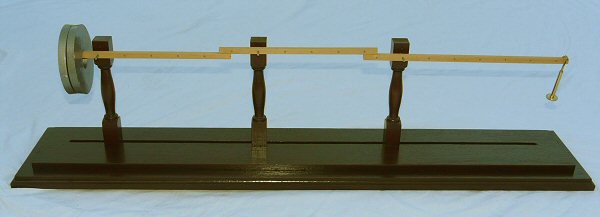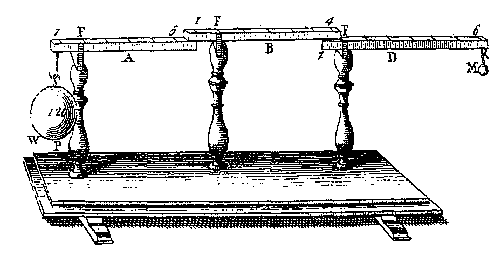Newtons Experiments - three levers


In practice we find that when the 1200g weight is attached on the first lever on the left hand side of the apparatus the levers all tend to move and the system is not in equilibrium. When the 10g weight is placed on the third lever on the right hand side everything is in balance and all the levers remain horizontal. We show that we can balance 1200g with 10g ! We also discover that we are able to do this because of the greater movement required by the smaller weight. When the 1200g weight moves the 10g weight has to move 120 times further!
Note: this is really a 'model' of a three lever system as there are a lot of errors in this simple set-up. In an ideal world the levers would not weigh anything, or at least would only weigh a very small fraction of the weights involved. In this example the right hand lever holding the 10g weight amounts to several grams itself. The design was based on a sketch of an apparatus that aimed to balance 120 pounds by with 1 pound weight.

home | diary | whats on | CSC summary | latest news